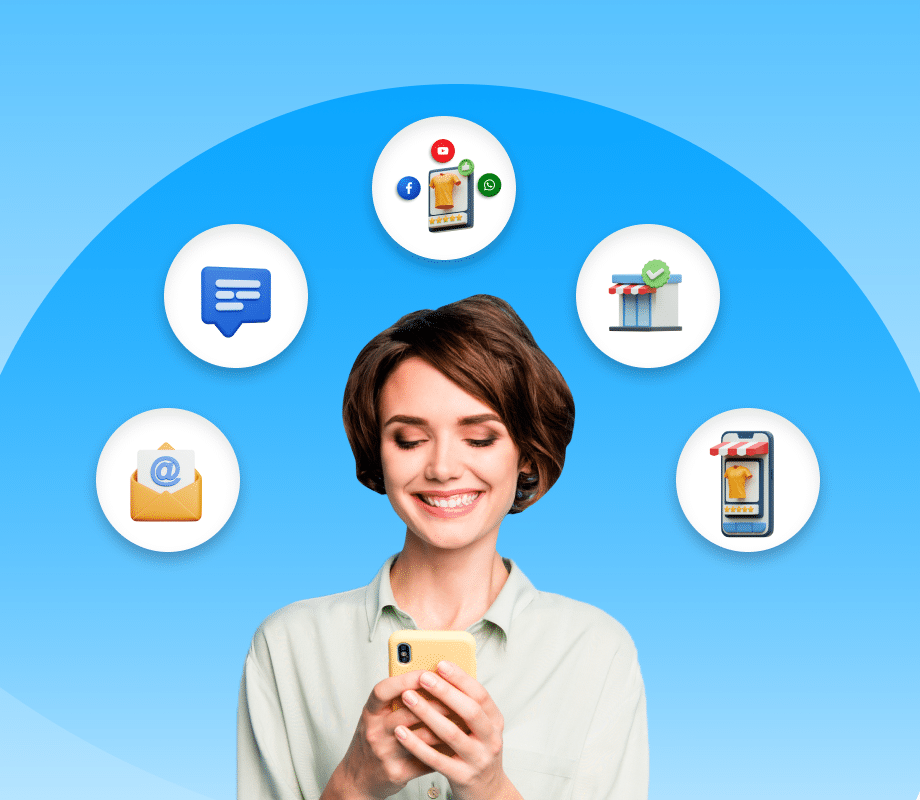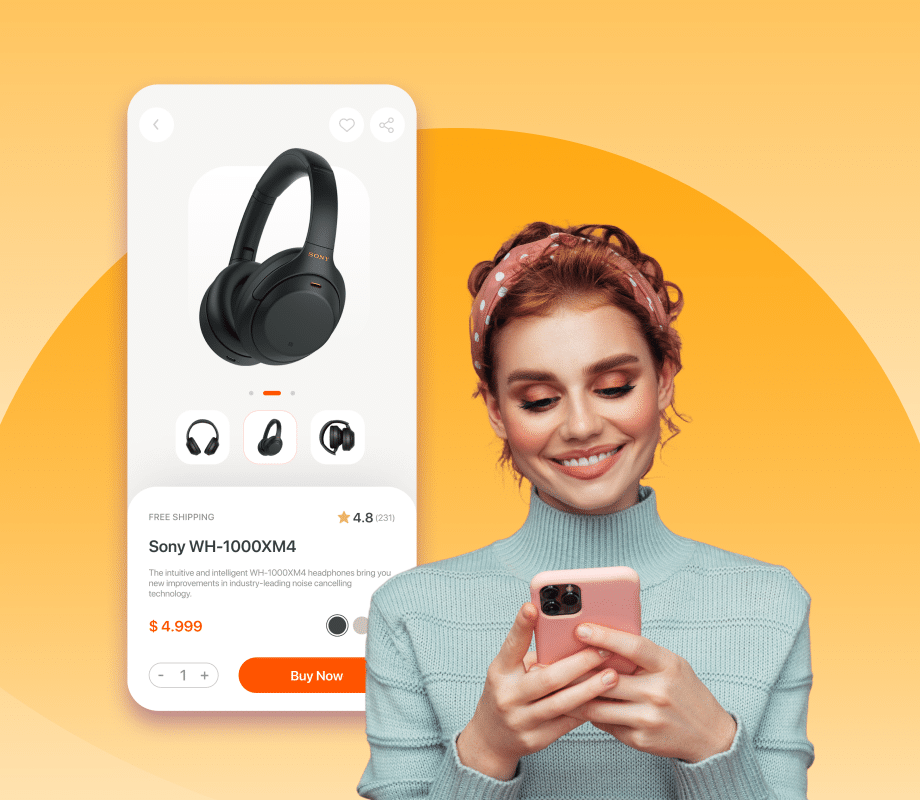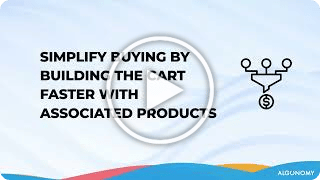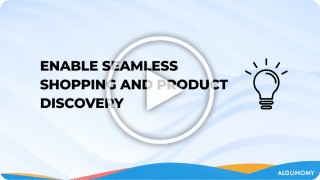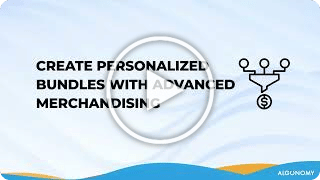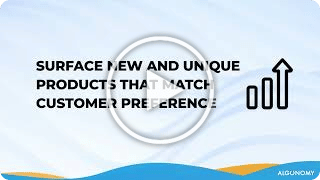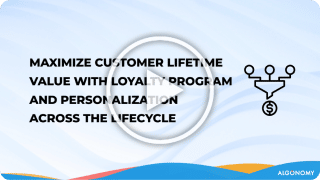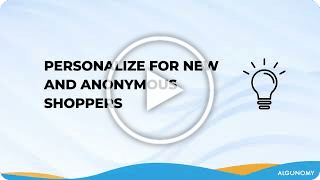SHOP CA overview
Gary Black, Chief Technology Officer at SHOP.CA, speaks at CAS 2016.
Let me start with a background of SHOP. So we’re, we’re relatively young. We’re five years old, but we still think of ourselves as a startup, we act like a startup. We were founded in 2011. And really, the reason why I mentioned the Canadian representation here, what I think is really fascinating is when we found that ourselves in 2011, the reason why we did was ecommerce in Canada was very immature compared to the United States. And we saw a big disconnect between supply and demand. And we had Canadian consumer spending at that time, roughly 20 $22 billion per year per year online. And two thirds of that was leaving Canada and going to US based retailers. So that’s an interesting challenge. And when we started to peel the onion back a little further, what we found was it it really wasn’t a demand problem Canadians love to buy online, it was a supply problem. So we set out to solve that problem by bringing together people that had products to sell in Canada to Canadian consumers. And we did that by creating a multi merchant marketplace. So although we look like a retailer, an act like a retailer to consumers, we’re really a platform that brings together third party sellers, which may be manufacturers, other retailers, wholesale distributors and give them a vehicle to sell into Canada.
So we do that by providing tools for those merchants to list their products. And what makes that challenging and interesting from the consumer side of shopping. I’d say the retail side if you will, is the merchandising and the presenting of those products to our customers can be a challenge because that product catalogue is large. When we went live, we had more than 10 million SKUs on the storefront that’s a very large product catalogue. Today we have about two and a half 1000 categories of products. And they range as we heard from the racket hand folks earlier, you know their marketplace down here in the States. And a similar challenge that we have is a very broad product catalogue that can sell and everything from small appliances, major appliances, shoes, apparel, cosmetics, and everything in between.
We started working with RichRelevance(now Algonomy) from the very beginning. And really that was driven from the size of the product catalogue. In fact, RichRelevance(now Algonomy) if I recall was maybe the number two or number three, technology vendor that we signed with. As we were in the build stage of creating shop.ca. We just knew out of the gate that with a very large product catalogue, it would be very difficult to us to manually merchandise, two and a half 1000 categories and millions of products.
So our story today, what I’m here to present to you is really how we think about personalization. And this notion of this journey that the customer takes with us, and how we’ve, over the years, tried to inject a personalized touch point along all of the ways that the customer engages with us. And again, the reasons that brought us to personalization, we, we selfishly approached it from just a scarcity of manpower resources initially. Now with a very large product catalogue, we needed tools to effectively promote products to customers.
And naturally, that goes along with increased conversion rate and revenue. But as time has gone on, we’ve really seen opportunities to leverage personalization for getting customers to come back to the site more frequently making the site more relevant for them, deeper engagement, longer time on site, etc. So those are the types of metrics we look at and personalization for us now really extends across the whole end to end customer lifecycle.
I think I take every solution, Amrita throws my way. We love. We love innovating. We have a very small technology team at SHOP. But we work very hard. And we’re always curious to try new things. So in the very beginning, you know, we had the RichRelevance(now Algonomy) recommendation product on the storefront, we had recommendations in email. As time went on, we extended that to include on my Rex landing page, which I’ll show in a moment. We’ve then added on over time that the auto type ahead search, we’re soon to roll out the sort category sort search sort, personalization. And most recently, we’ve rolled out, engage and content personalization on the storefront.
So as you shop at SHOP that you visit us, you’ll start to see that personalization story evolve over time. As we learn more about you, we start to present more information back towards you. And we start the personalization story right from the very first entry point into the storefront, which is our homepage. And one of our interesting challenges that we have, and I heard questions earlier today. So I think this is something that other folks struggle with is differentiating new visitors versus repeat visitors. For us about two thirds of our traffic every day is someone that’s never been to our storefront before. So that’s an interesting marketing problem to solve on how to how to present products when that person you have zero history about. So that’s something we continue to try and improve and innovate on. As you browse shop.ca we present product recommendations really throughout the Browse experience on the site. And we have many placement areas. We have category page, product page, the auto suggest search as I mentioned, homepage, the add to cart pop up, the cart page itself, order complete page, we’ve got, we’ve got rest covered.
We’re using the SEO feature from RichRelevance(now Algonomy) which I don’t know if many of you have explored but that one we like a lot where again, with many visitors coming in, that are net new to us, and particularly about half of that new traffic every day is organic through SEO. When you land on our page as an organic visitor, we’re presenting recommended products at that. So we push the page down and present recommended products at the top of the page. With the theory being that, you know, we want to avoid a bounce for an SEO visitor so they might have landed on a deep link to a product page if it wasn’t exactly what they’re looking for. At least we have our x across the top to keep them engaged on the site.
Most of our outbound emails have some degree of personalization in it, including the operational emails. So our order confirmation emails have got personalized product cross sell upsell and then our marketing emails we leverage personalization strategies for and I’ll talk about one that we do on Browse and cart abandonment, where we’re personalizing that journey as well.
And then something that we did last year, which I think is kind of cool is we, we took RichRelevance(now Algonomy) deeper into the customer experience to now areas that the customer doesn’t even see themselves, which is our CSR portal. And I’ll share that one.
So just some screenshots here of some of the areas that we use and personalize. This is a part of our homepage. And this is one of our just internal shop challenges, we historically have come from a mindset of candidly throw stuff on the wall and see what sticks. So our homepage has been over time, started off small and then kept growing. And we have this internal battle with different category owners and merchandisers that always want to get some part of the pie on the homepage. And, and so our homepage grew, and frankly, got way too long. With the belief that is, there’s something for everyone there, then there’s something for every visitor. Recently, we’ve made a lot of changes to that experience, we’ve really tried to make it more personalized, we’ve shrunk the homepage, we’ve taken content out. And now we believe the homepage, rather than being a place to get an Add to Cart, we treat the homepage as a get the customer to start the journey. So if we can get them giving us some kind of a hint of their interest, whether it’s a category, or a particular promotion that we have that week, that’s way more valuable than a click and a bounce on the next page. So category titles, again, with 25, top level categories, 2800, we don’t have the real estate to show them all. So we programmatically and through RichRelevance(now Algonomy), promo tool, Content tool, are serving up the different pieces of content based on where that visitor has been, or people like them.
This is my favorite recommendation page that we have. It’s also one that doesn’t get a lot of traffic, because we varied it. So we’re doing some new things to promote this better. This is my racks. I don’t know how many of you guys are using this. But this is a full landing page, I wish I could scroll down on the browser because it’s probably the most interesting usage of the tool, my opinion for a truly personalized recommendation landing page. And so as you browse, this fills out and gets richer and richer. And the way that you access this page, it’s kind of buried on our homepage navigation under the heart icon, there’s recommended for you, we’re doing a test to try and promote that further. And one thing that we’ve done in the past month that we’re seeing some good results from is creating a link to this page that’s in our email. And so we feed our email, we use ExactTarget. For email, we feed our email, platform lots of data every day. And one of those pieces of data is the date of your last visit, we pass in RFM data on purchase your categories that you’ve browsed. And we use that now on our emails to say if you’ve been to our site, within the past 30 or 60 days, we’ve probably got very relevant recommendations for you. And we want to land you on this page. Because when they do land on this page, it converts very well.
This is an example of a what we call a browse abandoned email. So cart abandonment, well known you put something in your shopping cart, you didn’t complete the sale, we’re going to chase you very quickly with a follow up email. That’s an area actually that we did some work with RichRelevance(now Algonomy) in the early days to get some of that data very quickly. So originally, we were using our analytics platform to tell us that cart abandonment, it could only tell us that information on a daily basis. And so we did some work with RichRelevance(now Algonomy), where we can pull that information out much more frequently. In fact, we get it every two hours, we feed this into E T, we grab that file, we pull it down, we enrich it with additional product data. And then we send it out to follow up with you if you browse the category or abandon a cart, a product in your shopping cart. And then we show you the product that you may have looked at and abandoned or the category that you abandoned. And at the bottom, it’s cut off there. But then we serve up personalized product recommendations as well in that in that customer touch point.
This is a pretty horrible looking UI. But that’s because it’s for our staff, not our customers. And this is our CSR order screen. And you can see in the middle of the page here we’ve got customer interested products. These are prompts for our CSRs when they’re servicing the call to suggest other products to that customer. And that’s all driven through RichRelevance(now Algonomy). That’s something that we rolled out just before the holidays last year, and just part of our business being a marketplace because the product catalogue is so big it’s impossible for our CSRs to know everything that’s in there and intelligently talk to the customer. So we found this a great way to prompt the conversation and give them a talking point while they’re on the phone with the customer. I’ll just highlight you can see above, if you can read it, there’s a little bunch of numbers there personalization ID. And that’s something that we spent quite a bit of time on making sure we had a consistent representation of the customer.
RichRelevance(now Algonomy) works fantastic. When information is correct, it gets weird when information is not correct. And if you don’t have a consistent view of the customer, across the mobile, the desktop, the call center, then product recommendations are going to become not very relevant. So we spent a fair bit of time making sure we’ve got a consistent customer ID, if they’re logged in, if they’re remembered, we follow them along and all their different devices with a consistent identifier. So you know, I’m like, I’m sure everyone in the room here, the goals are like everyone in the room for us with RichRelevance(now Algonomy) increase online revenue, average order value, I’d say recently, the goal is just increase time on site and engagement, get them deeper into the site. As as there are so many products and categories to offer.
Margin for us is a really important one, when you’re a marketplace, we have retailers that pay us to sell their product, and we’re taking a piece of their margin. So the margin that we have to work with is very narrow. And so we do a lot of configuration and boost and block rules within RichRelevance(now Algonomy) to protect our margin dollars. So we carefully consider the margin of the category of the product, and should we recommend or not recommend a particular product. And that one I’ll just call out as an interesting thing to be cognizant of is you guys are using some of the strategies to tune and tweak the recommendations. Some sometimes there’s, you know, unforeseen consequences. So this is one that when we rolled this out, we didn’t realize the implications it would have in some parts of the site. So we use the type ahead search, which if you guys have seen you start typing, and then there’s recommended products below, when you start to constrain racks on which products that can suggest that can influence also the type ahead search. And that’s not a typical user wouldn’t expect that if they’re searching for jeans, they should see jeans, even though jeans to us might be a lower margin category, and we may not want to recommend it. So I call out there’s this be thoughtful of strategies and placements. They’re not always intuitive. And we certainly learned through that exercise, conversion rate, repeat frequency, marketing efficiency, one of the other areas that we focus a lot on is just driving down our cost to acquire an order. We think a lot about that, given the small margin we have to play with. And so as we can, you know, inform at every customer touch point, the chance to convert with a very relevant story. That’s one way that we’re able to do that.
And then finally, mobile tablet was a big one for us. Last year, we rolled out a responsive website that a complete redesign. And again, just a caveat or a thought for you there. If you guys are going through that exercise, be mindful of how placements respond in a responsive website. And don’t hide them without telling RichRelevance(now Algonomy) that you’re hiding them. Because now, it thinks it’s serving content that no one’s clicking on because they can’t see it. And that has a negative impact on the learning of the platform. So that’s something that we learned and sharing that with you.
So the results are all of these exercises. This is year over year. So this information is really the year 2015, if you will, when a lot of these initiatives were rolled out our average order value in the year improved 46%, we improved our margin take rate, which for us as a marketplace is really important by 30%.
We rolled out the customer engagement in our call center. And across the storefront had a 15% improvement in conversion rate, which is a great win for us. On the repeat side 10% improvement in our active customer base. That’s a measurement of what percentage or what quantity of our customers have made a purchase in the past 12 months, we drove down our cost to acquire an ORDER BY 48%. And then really on the right hand side. That’s a whole bunch of stats on mobile and tablet. And I can tell you from our case, last year in June, we rolled out responsive it’s right around the same time that Google made some changes on page rank, favoring responsive websites. We saw a really significant increase in SEO traffic. Mobile for us last year was maybe 30% of traffic. Today, it’s generally on average 50% on weekends can be as much as 60% of our traffic from mobile. So lots of thought for us on how to improve that customer experience of mobile and we saw some great results on conversion and improvement with rolling out that responsive site. Interestingly, time on site went the opposite direction. And we think that’s really customers now with a mobile phone, they’re in and out, they’re they’re much more transaction oriented. And so they’re, they’re not spending as much time browsing around. So that has us thinking about how do we react to that, and what would we do differently on the mobile experience with a very transaction oriented consumer. So our keys to success, Emerita, are great relationship on the account side and, and certainly bringing in a lot of the horsepower within RichRelevance(now Algonomy), I always enjoy, when we get the folks up to our office, get on the whiteboard, and start to brainstorm things that we can do. We’re very thoughtful of marketing and technology.
I’m a CTO here at kind of a marketing conference, which is a bit of a weird fit. But that’s just the reality for us that that the person I work closest with in our company is our CMO we spend, like literally were beside each other all day long, because his entire world now is technology and data driven. And my world is enabling that. And through a lot of the work we’ve done with RichRelevance(now Algonomy), we’re very pleased with that customer journey that we’ve created. So we’re always thinking about what’s next. These are very tactical things, but they kind of align with some of those initiatives we kicked off last year. This year, again, being a marketplace, our category count is expanding. We recently rolled out one half if you will of customer preference center with our categories. So now customers can like a category or a brand. We’ve yet to sort of surface that we that’s work still to be done is kind of use that now to surface. Really a brand favorite page or a category favorite page, some of the things that we’re thinking about.
We’re getting our teams now much more involved in the merchandising tools within RichRelevance(now Algonomy). So our, our marketing team in the past used to treat relevance really, as a black box, kind of set it, forget it and let it do its thing. Now they’re very involved with creating upsell, cross sell strategies and rules to better influence. And just keep tweaking the dial on that that customer relevant story. And engage will be rolling out deeper to the site, sort on gallery pages, category pages, search pages. And then the last one, you know, we continue to challenge ourselves on how we serve a new customer versus a repeat. Again, for us two thirds of our visits every day, have never seen us before. It’s a very interesting customer segment to solve.
Ready for the Next in Digital-First Strategies?
Learn how to use disruptive, AI-powered technologies to create frictionless,
hyper-personalized experiences that connected consumers expect today.

 in Sweden from 7 - 8 October 2025. Pre-book a meeting to connect with our
product experts.
in Sweden from 7 - 8 October 2025. Pre-book a meeting to connect with our
product experts.

